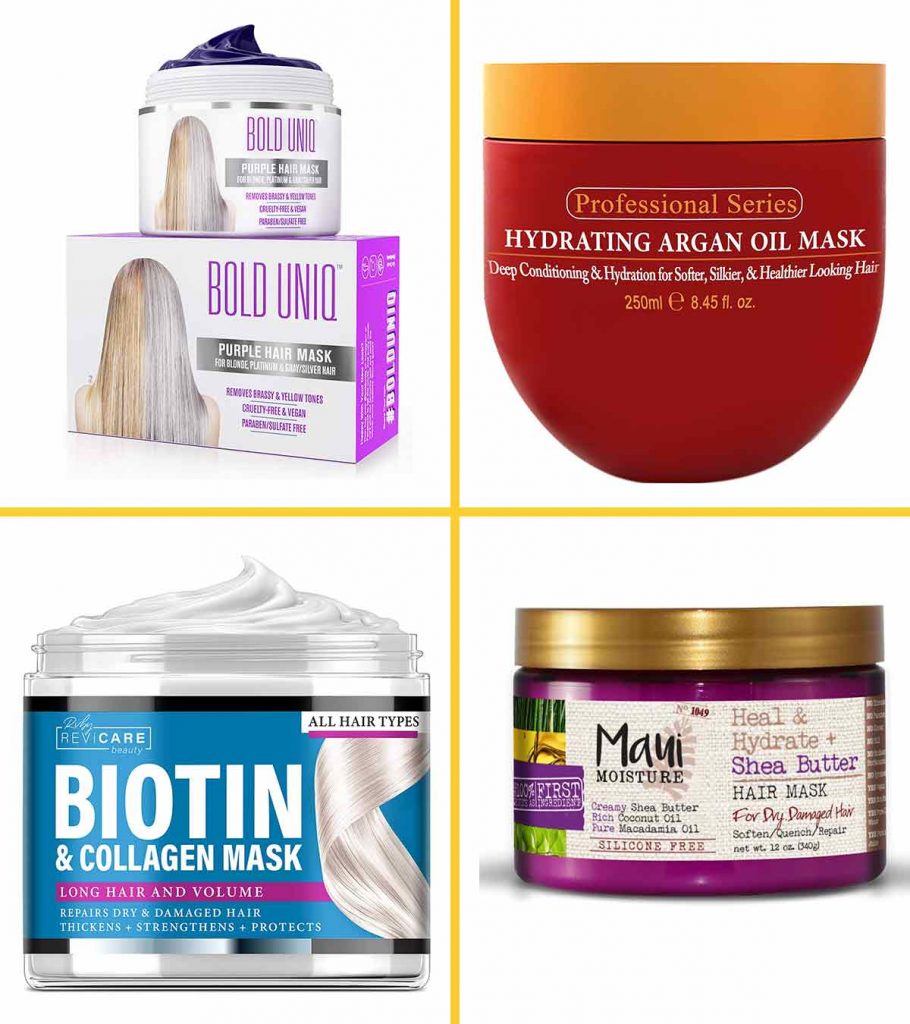
Both the CDC and the FDA warn against treating this common childhood condition on your own with non-prescription treatments.
How to prevent damage
Can You Restore Heat Damaged Hair? Here's What Trichologists Say - E! NEWS
Can You Restore Heat Damaged Hair? Here's What Trichologists Say.
Posted: Fri, 12 Apr 2024 07:00:00 GMT [source]
A diet loaded with whole foods like fruits, vegetables, and whole grains has a host of benefits, including healthy hair. Biotin, vitamins A and C, and iron are all important for strong, luscious hair. Regular haircuts can go a long way toward keeping your hair healthy and well-maintained. Going too long between cuts can lead to dry split ends. And as with the rest of your strand, you can’t put split ends back together.
It’s tangled
As it works its way through your hair, it also strips the oils from your hair. Try washing every other day — or less if you can — to help keep those oils in your hair and prevent over-stripping the moisture. Sometimes it’s all too clear how you ended up with damaged hair. When used improperly, dye, bleach, and styling tools can do a number on your locks.
How to Fix Damaged Hair
The telltale signs of heat-damaged hair are pretty evident. After one too many blow-dry sessions, your hair may be harder to manage, and it doesn’t hold its shape as well when you style it. If you’re seeing a ton of split ends and breakage while styling, take a break from tight hairstyles like ponytails and buns—especially while you’re sleeping or when your strands are still damp. “Putting your hair in a pony or bun while it is still wet and fragile causes breakage at the elastic,” notes Tengler. This goes for braids and buns without proper care, too.
But even with all our attention, hair texture, volume, and color can change unexpectedly. Our experts continually monitor the health and wellness space, and we update our articles when new information becomes available. There may not be an obvious cause for your hair troubles.
Add Shine With an Oil
In other words, the goal should be protecting and promoting healthy growth with the right products for your hair type while simultaneously prioritizing damage repair. To steer you in the right direction, we consulted with industry experts about how to repair damaged hair, along with their favorite products for the job. Curbing damage can be as simple as using nourishing hair masks and brushing wet strands correctly. Read on for ways that may help repair damaged hair and some of the best hair products available at the drugstore. A dependence on hot tools for your daily routine can reveal itself in multiple ways. "Heat opens the cuticles, allowing the hair to dry and shape when you are blow-drying or curling your hair," Nation explains.
Featured Articles
For hair that is in the early stages of damage, hair treatment methods can smooth down the hair follicles, which may then help repair the look of damaged hair. If a person does not remove the split ends, the split will continue up the hair shaft, leading to hair breakage and further damage. The hair shaft is the nonliving part above the scalp’s surface.
Deep Condition Once a Week
Hair damage happens for myriad reasons, but the usual suspects are chemicals, heat, and mechanical issues. Damage shows up differently across different hair textures, and can manifest as brittleness, dryness, split ends, and overall dullness. Still, another added benefit they tend to have is protecting and maintaining the color, making them color-safe. Nine Zero One is a salon located in Los Angeles, California. They provide a variety of services, such as haircuts, colors, Balayage, and manicure treatments. They also host classes for color correction, demonstration sessions, boot camps, cutting, and styling.
You can even DIY a leave-in conditioner with coconut oil. Heat up a small amount, and apply it to your hair from mid-shaft to ends. If you prefer the store-bought method, we love the replenishing ceramides and essential fatty acids in BRIOGEO HAIR CARE Don't Despair, Repair!
She recommends Kérastase's Genesis Strengthening Shampoo ($42) for anyone experiencing breakage, thinning, or damage to their hair. Heat Shampoo ($11), which helps retain moisture and provides a protective barrier. It can increase smoothness and shine, and users report less frizz and flyaways.
Denis recommends looking for a mask that’s free of silicones, sulfates, filler ingredients, parabens, phthalates, synthetic fragrances and other harsh chemicals. The Allyoos Juice Drench Hair Mask is a great option because it nourishes and hydrates without any potentially harmful ingredients, and it won’t weigh your hair down. The hair is also in a most vulnerable state while it's wet, so rather than brushing your hair after the shower, try brushing and detangling the hair before you wash and condition.
We straighten, shampoo, moisturize, spray, cut, and color it to tell the story we want. Some days that’s pin straight, other days it’s french braids. Hair that’s lacking natural oils is often rough, dull, and prone to static electricity and tangles. Properly hydrated hair is less likely to get tangled or knotted. If conditioner alone isn’t enough, consider adding a leave-in conditioner or detangler to your routine. It can also help replenish the protective oils on the outside of your hair.
“Always start from the ends and gently work your way up. ” Look for a detangling brush to delicately get the job done. If you're experiencing hair loss, Fusco recommends booking an appointment with your dermatologist. "Your dermatologist may recommend a range of treatments that include supplements, topical agents like minoxidil, low-level light therapy like HairMax, and platelet-rich plasma therapy." Then, comb all of the product through and wrap it up in a low bun while you sleep.
Hot water opens up the outer layer of your hair (cuticle), whereas cold water can help close it. Rinsing with cool or cold water can help protect the inner layer of your hair and hold in hydrating oils. You can use a wide-toothed comb to work conditioner or detangler through your hair, but wait until it’s dry to break out the brush.
This can cause the hair shaft to become fragile and prone to splitting and breaking. Mechanical damage occurs when hair is handled roughly—think excessive styling, brushing, and even vigorous detangling. “Knots in the hair from not brushing and tight ponytails and braids can also cause damage,” Hong notes. Apply 1/2 pump from mid-shaft to ends (more for longer, coarser textures) on damp hair.













